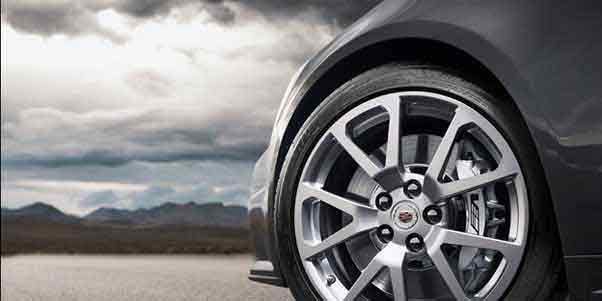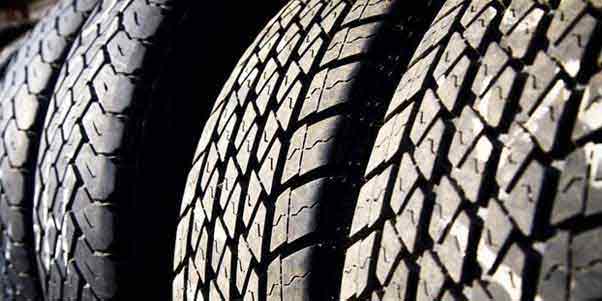
The Tyre is the black rubbery thing that keeps the vehicle on the road. It is, without a question, one of the most important parts of a vehicle. Everything on the road, whether it's an electric vehicle or a gas-powered vehicle, requires a tyre. Nonetheless, there are numerous types, sizes, and brands of tyres available on the market. This makes the tyre purchasing process a little perplexing.
Tyres are one of the most important components of your vehicle because they are the only point of contact between the vehicle and the road surface. As a result, it is critical that you select a good set of tyres for your car because they improve the acceleration, braking, and handling quality of your vehicle. Good tyres can also help with fuel efficiency. Cheap quality tyres, on the other hand, can provide an unpleasant and bumpy ride. The following are some considerations to make when selecting a set of tyres for your vehicle:
1. Weather effect
Because air is made up of various gases, it expands when heated and contracts when cooled. In hot weather, the expanded air exerts more pressure on the tyres from within, increasing tyre air pressure.
Aside from the different seasons, the temperature difference between day and night affects tyre air pressure. Furthermore, the air inside the tyres heats up due to tyre flexing during use. Tyre flexing during aggressive driving can have a far greater impact on tyre air pressure than ambient temperature.
Most people take their cars to a nearby gas station or tyre shop to have their tyre pressures adjusted. Vehicle's manufacturer specifies the cold tyre pressures. Even driving for a few minutes and then adjusting the air pressure can cause the tyre pressure setting to be significantly different than what the manufacturer recommended.
To get their tyre pressure adjusted, most individuals drive their cars to a nearby gas station or tyre store. However, keep in mind that the vehicle manufacturers specify the cold tyre pressures. Even driving for a few minutes and then altering the air pressure can result in a tyre pressure setting that is significantly different from what the manufacturer recommends. Given how all of these factors affect tyre pressure, it's critical to choose the best conditions for having the tyre air pressure tested and increased/decreased.
The influence of ambient temperature change on tyre air pressure is particularly noticeable in India's northern region, where temperatures are high in both winter and summer. Temperatures in the summer can reach 45 degrees Celsius, while temperatures in the winter can drop to 3 degrees Celsius. In general, the tyre pressure changes by 2% for every 12-degree Celsius change in ambient temperature (up with higher temperatures and down with lower).

Most car manufacturers recommend a tyre air pressure of 30-35 psi, therefore a temperature change of 12 degrees Celsius will result in a 1 psi change in tyre pressure. You can complete the remainder of the problem on your own.
2. Size of tyres
Cars on the road have different sizes of tyres. Despite the fact that the numbering mechanism is universal, different car manufacturers tend to equip their vehicles with different tyre sizes.
- Tyre size bifurcation includes Rim Diameter, Tread Width, and Aspect Ratio.
- Returning to tyre size, we recommend selecting a tyre with the dimensions recommended by the manufacturer.
- If you don't want to mess with the vehicle dynamics, use this option.
- The majority of car owners prefer a wider section of a tyre. Yes, this improves the vehicle's stance and expands the tyre's contact patch.
When choosing between tubeless and tube-type tyres, tubeless tyres should always be chosen because they are far more advanced and safer than tube-type tyres. In addition, they have a number of other advantages. Furthermore, tubeless tyres do not require alloy wheels to be installed. Your steel wheels, which are rust-free and have an anti-rust coating on the inside, will also work well with them.
When purchasing new tyres, the size should be taken into consideration. And you'll need to know how to read a tyre size for that. It is usually mentioned on the sidewall of a tyre and is depicted in a uniform fashion. 195/55 R 16 87V, for example. It can be read as follows:
- The tread width of the tyre is 195 (mm).
- The percentage of the tread width that contributes to the sidewall height is 55 (percent).
- The radial construction of the tyre is denoted by the letter R.
- The diameter of the wheel is 16 (inches).
- The number 87 relates to the tyre's load index.
- The tyre's speed rating is denoted by the letter V.
3. Over size tyre diameter
Another factor to consider is the tyre's diameter. People sometimes change the diameter of their wheels for cosmetic reasons, but this can cause issues with speedometer and odometer readings because the circumference is now different. When purchasing aftermarket or replacement products, the external parameter is critical. If you ever change the size of your tyres or rims, the finished product should have the same external diameter as the original tyres. As a general rule, the difference should not be less than 2% of the original diameter or greater than 1.5 percent.
4. Rpm issue
Before we get into what causes RPM fluctuation, we should first define RPM. RPM is an abbreviation for "Rotation Per Minute." When a vehicle accelerates or decelerates, the tyres rotate at a constant speed. Vehicles with higher RPMs frequently consume more fuel and force the engine to work harder. Your vehicle's RPM may increase if your engine is idling at a higher RPM due to an internal issue. Learn what causes a vehicle's RPMs to spike and why your RPMs jump when you accelerate.
The top causes that a mechanic would look for are listed below.
1) Defective Spark Plugs
2) Ignition Coils/Wires That Aren't Working
3) Leak of Vacuum
4) Problems with the Carburetor
5) A clogged fuel injector
6) Air Filter Clog
7) A malfunctioning idle air control valve
8) Improper Cam Timing
9) Misaligned Ignition Timing